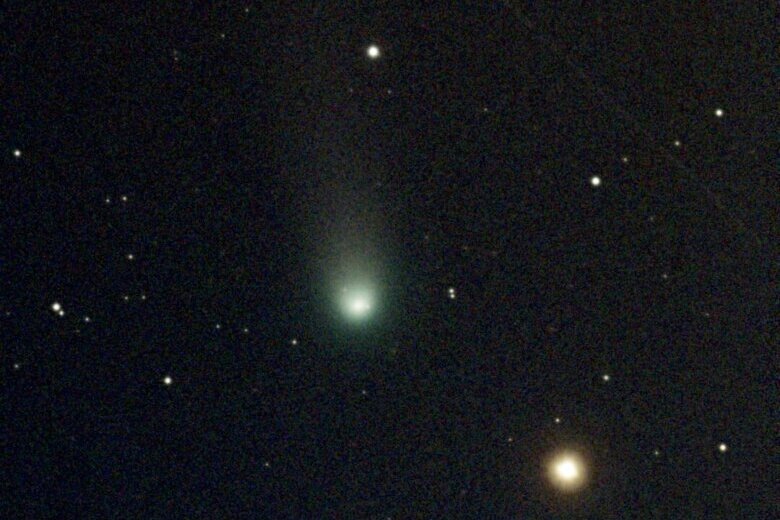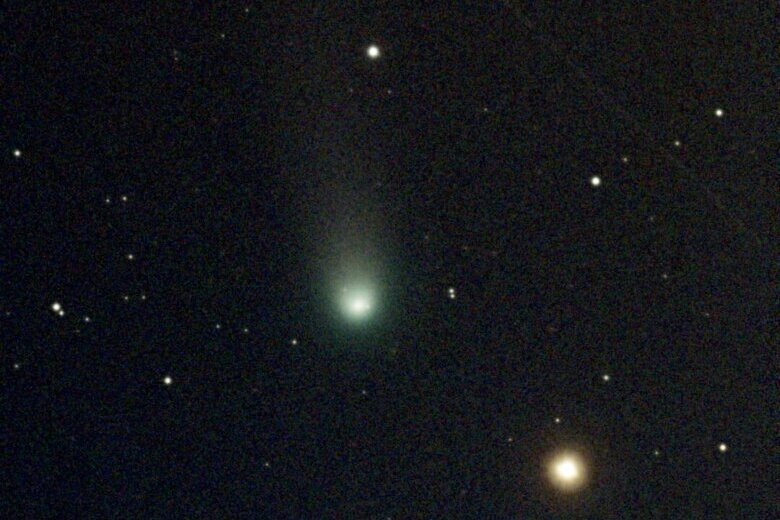Comet C/2025 A6 Lemmon is getting brighter and whether you have a telescope, binoculars or just your eyes, here’s how you can catch a glimpse.
A year ago, the D.C. region was enthralled with Comet A3 adorning our skies.
We now have another comet, C/2025 A6 Lemmon, that’s possibly becoming bright enough to be visible to the naked eye in the coming days. It has been a fine view in a telescope and/or binoculars since its discovery in January, with the last few weeks getting even better.
Comets are leftover debris from the formation of our solar system and they are constantly on the prowl in the solar system at any given time.
As explained by NASA:
“Each comet has a frozen part, called a nucleus, often a few miles across. The nucleus contains icy chunks, frozen gases with bits of embedded dust. A comet warms up as it nears the Sun and develops an atmosphere, or coma. The Sun’s heat causes the comet’s ices to change to gases so the coma gets larger. The coma may extend hundreds of thousands of kilometers. The pressure of sunlight and high-speed solar particles (solar wind) can blow the coma dust and gas away from the Sun, sometimes forming a long, bright tail. Comets actually have two tails — a dust tail and an ion (gas) tail.”
It has been five years since the Northern Hemisphere had a really bright and beautiful comet to see, which was Comet NEOWISE.
Sky watchers can now start looking for Lemmon about 90 minutes before dawn and starting Thursday, it may be visible in the predawn and post-sunset dark skies. Refer to the star charts on EarthSky’s website to help find the comet.
Try to find the darkest skies you can for predawn and after it gets dark following sunset, along with good horizon views that are free of trees and tall buildings.
Check the weather for clear or partly cloudy skies, which will hopefully give us a chance to see Comet Lemmon.
If predictions hold true (comets are notoriously difficult to predict their behavior, just like cats), the comet will get brighter and easier to see in the October days to come and even possibly in November.
If you have a telescope or binoculars, I highly recommend you use them to improve your view and actually see some details in the coma, nucleus and tail of Comet Lemmon.
Use your smartphone or camera to photograph Comet Lemmon using the appropriate exposure and image composition. Your best bet is to use a tripod to take an image and see how it turns out and make the necessary corrections, then take another shot.
And guess what?
We have two other comets that are capturing our attention: Interstellar comet 3I/ATLAS, only the third such object ever seen so far, and comet C/2025 R2 (SWAN).
As for 3I/ATLAS, it will likely remain visible solely through a telescope, or perhaps binoculars; while C/2025 R2 (SWAN) is brightening but is a difficult sighting for Northern Hemisphere observers due to its low altitude in the west after it gets dark.
Comet SWAN will be getting higher in the sky each day. Check this link for daily star charts.
And WTOP highlights the most noteworthy sky sights each month in the feature “What’s Up in the Sky?”
Good luck and clear skies!
Follow Greg Redfern on his daily blog to keep up with the latest news in astronomy and space exploration.
Get breaking news and daily headlines delivered to your email inbox by signing up here.
© 2025 WTOP. All Rights Reserved. This website is not intended for users located within the European Economic Area.
First Appeared on
Source link














